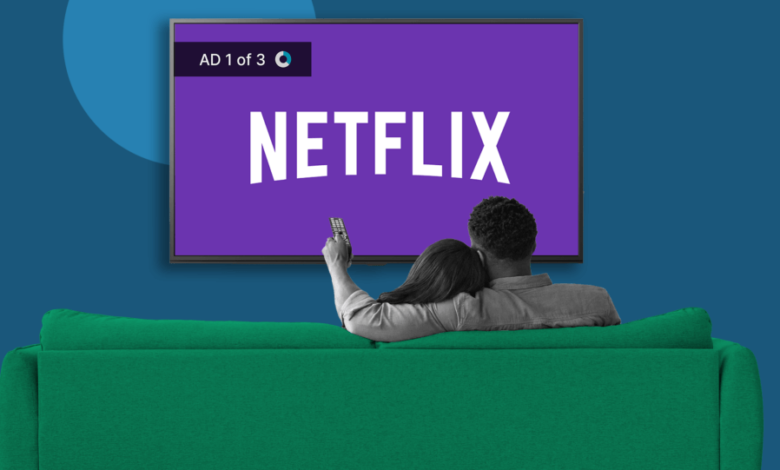How to Advertise on Netflix: A Guide for Marketers

The rise of streaming has revolutionized how brands engage with audiences, and Netflix, with its expansive reach and top-tier content, is now a critical player in this new landscape. Since launching its ad-supported tier in 2022, Netflix has developed a sophisticated advertising ecosystem that offers marketers access to a premium, engaged audience. This guide outlines everything marketers need to know—from platform mechanics to campaign optimization—to advertise on Netflix effectively.
Understanding Netflix’s Ad-Supported Model
Netflix introduced its Standard with Ads plan at $6.99 per month in the United States as a more accessible alternative to its ad-free options. By mid-2024, this tier had gained over 40 million monthly active users globally, thanks to its lower price point and broad content access.
Ads are limited to about four to five minutes per hour and appear as pre-roll or mid-roll placements. This light ad load, combined with thoughtful integration, preserves Netflix’s hallmark viewing experience and differentiates the platform from more disruptive ad models.
See alsoThe Rise of Competitive Gaming in Global Culture
Getting Started with Netflix Advertising
Marketers can access Netflix’s ad inventory through:
- Programmatic buying via partners like Microsoft’s Xandr
- Direct sales for custom packages and sponsorships
Before launching a campaign, brands should:
- Define campaign objectives (e.g., awareness, product promotion, engagement)
- Select an appropriate ad format (10-, 15-, 20-, 30-, or 60-second videos)
- Submit creative assets for review in compliance with Netflix’s content standards
Prohibited ad categories include alcohol, tobacco, political content, and any material deemed misleading or inappropriate.
Leveraging Netflix’s Targeting Capabilities
Netflix offers deep targeting capabilities, drawing on user data to match ads with relevant viewers. Brands can target by:
- Demographics (age, gender)
- Viewing behavior (genres, frequency)
- Location
- Trending content (e.g., daily Top 10)
For example, a brand promoting wearable tech could target users who frequently watch sci-fi or tech-focused documentaries. Advertisers also have the option to exclude ads from mature content, ensuring brand safety and relevance.
To improve performance, marketers should align creative strategies with audience insights. For instance, bold visuals and fast-paced storytelling may appeal to urban Gen Z viewers, while emotional narratives may work better for family-oriented campaigns.
Exploring Ad Formats and Innovations
Netflix offers a mix of traditional and unique ad formats to increase engagement without overwhelming viewers.
Key Formats:
- Standard video ads (10–60 seconds)
- Binge ads: Viewers who watch three consecutive episodes get the fourth episode ad-free
- Title sponsorships: Brand alignment with specific series or films
- Moment sponsorships: Ads tied to live cultural events like The Netflix Cup
These formats allow brands to integrate messaging into Netflix’s premium content environment and create memorable associations.
Interactive ads—currently being tested—will enable viewer engagement through elements like polls and QR codes, offering a deeper level of interaction and data collection.
Budgeting and Measuring Success
Netflix commands premium CPM rates, typically ranging from $20 to $65, based on:
- Targeting precision
- Ad placement
- Campaign size and duration
While the cost is higher than some platforms, the value lies in Netflix’s engaged audience and high production standards.
Current Metrics Available:
- Reach
- Impressions
- Completion rates
Although Netflix’s attribution tools are still evolving, the platform has partnered with Nielsen and DoubleVerify to enhance analytics. More comprehensive performance data, including brand lift and conversion metrics, is expected by late 2025.
To track campaign success, marketers should set clear key performance indicators (KPIs) based on goals. Awareness campaigns may focus on impressions, while engagement campaigns may prioritize completion or interaction rates.
Navigating Challenges and Limitations
While Netflix presents substantial opportunities, advertisers should consider several limitations:
- Content availability: Around 5–10% of Netflix’s library, including titles from Sony Pictures, is unavailable on the ad-supported tier due to licensing restrictions.
- Emerging ad infrastructure: Some tools, such as real-time bidding or detailed attribution metrics, are still under development.
To overcome these limitations, marketers should remain flexible, stay updated on platform improvements, and build contingency plans into their strategies.
Best Practices for Effective Campaigns
Success on Netflix requires a creative and data-informed approach. Consider the following practices:
- Align creative with platform quality: Ads should mirror the polish of Netflix originals, using cinematic visuals and strong narratives.
- Test and iterate: A/B test different ad formats, lengths, and messages to find what performs best.
- Customize for the audience: Tailor messaging based on viewer demographics and behavior.
- Collaborate with Netflix teams: Leverage platform experts for insights, high-impact placements, and exclusive opportunities.
Scaling Your Netflix Advertising Strategy
As Netflix aims to double ad revenue by the end of 2025, it’s expanding opportunities for marketers. Growth areas include:
- Live event advertising: Real-time placements during sports and award shows
- Interactive formats: Deeper viewer engagement through clickable features
- Global market expansion: Increased access to diverse international audiences
To scale effectively, marketers should integrate Netflix into broader cross-channel strategies, including social media and other streaming platforms, to maximize reach and reinforce messaging.
Advertising on Netflix is more than a media buy—it’s a strategic investment in one of the world’s most powerful entertainment platforms. By understanding the system, leveraging innovative formats, and keeping the viewer at the center, marketers can create campaigns that truly resonate in the evolving streaming era.





